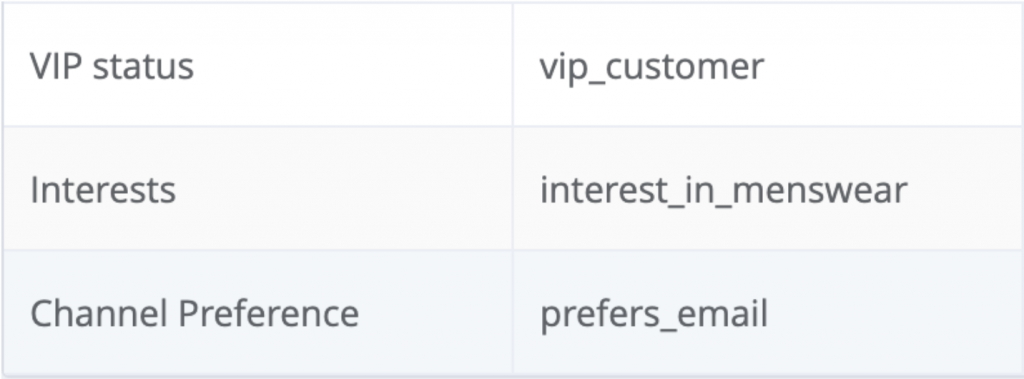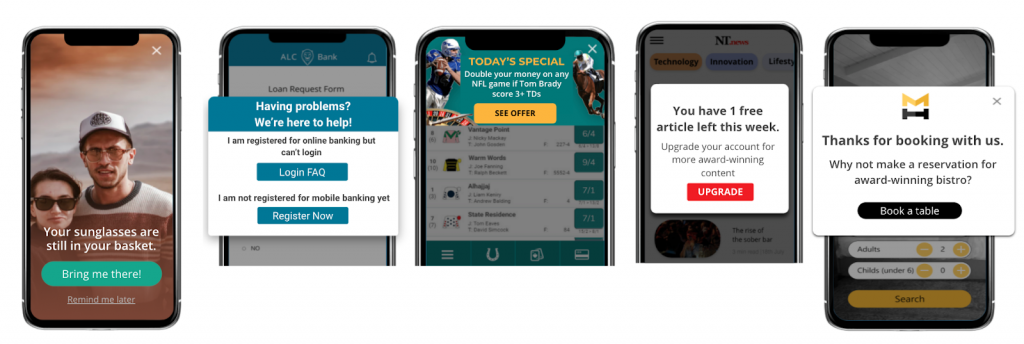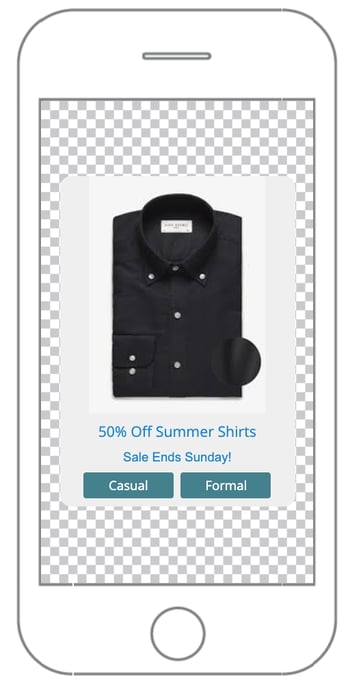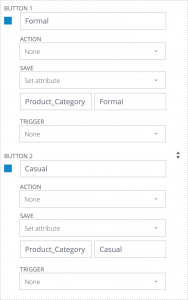Gathering first-party data from your app users
Having a stock of rich, first-party data is the key to delivering relevant and rewarding experiences for your mobile app users.
Collecting and intelligently using this customer data is essential in order to improve the most important app engagement metrics.
It’s what enables you to segment audiences based on their preferred content and interests, promote new products that are likely to get conversions and generally deliver an in-app experience.
Behavioural and transactional data, and profile attributes
Usually, the data collected from your app users is behavioural. In others, it’s related to their in-app (and, if you have a multichannel approach, on-site) activity. It might be based on what kind of products they have bought (e.g. sportswear or winter coats) or which pages of your app a customer usually visits (for a publishing brand this might be current affairs or culture, for example).
In any case, the point of collecting this data is so that you can use it intelligently to tailor both the in-app experiences and outbound campaigns (via push notifications).
One of the most coveted features of leading mobile marketing platforms is the ability to store these data points against individual app users as profile attributes. This allows marketers and CRM professionals to quickly create targeted audience segments, or even inject this data into hyper-personalised campaigns using dynamic content snippets.
Below is an example of some possible attributes that an eCommerce brand might have stored against one of their customers.

Transactional data, like average order value or lifetime spend, will come from your eCommerce or CRM, or whatever industry-appropriate backend system you’re using. And of course, this data can be used to inform your marketing and customer engagement strategies.
But beyond behavioural and transactional data, which is observed (i.e. it’s based on what the user does), how do you gather data on what your customers want and think?
This is what’s called psychographic data (opinions, interests, lifestyle and so on) or zero-party data. Typically, this data is much harder to collect, despite being highly valuable.
At Xtremepush, we’ve developed a simple but effective way of collecting data on your customers’ interests and intentions as part of their day-to-day app usage. And our in-app messaging channel is central to it.
What are in-app messages?
Essentially, in-app messages are delivered to app users mid-session, while the app is actually open and being used.
As you can see in the image below, there are plenty of formatting options available to you ranging from highly visible, full-page takeovers to more discreet banners.

They are used throughout the app user’s lifecycle, from the very first session all the way through, to share updates or nudge towards a business goal.
For those of you who are completely unfamiliar with in-app messages and are interested in understanding more about how they can be used to engage with app users, I recommend reading this in-depth guide which covers the most effective campaigns across different industries.
For our purposes here, however, looking specifically at how they can be used to gather customer data there are two crucial aspects of an in-app message to note; a) they are event-triggered and b) they can include multiple CTAs buttons.
How to gather customer data with in-app messages
Essentially, when creating an in-app message within the Xtremepush platform we allow you to take the action that an app user takes and save it as a profile attribute.
This capability can be used in a huge variety of ways. Let’s take an example from an eCommerce brand just to illustrate how it works in principle.
Below is a draft of an in-app message promoting an ongoing shirt sale.
To begin with, the campaign creator has used the segmentation engine to ensure that this message only appears to users interested in men’s fashion. It is triggered as soon as the user opens the app, with the intention of directing them straight to the items on sale.
The in-app message itself has two CTA buttons, which each represent a different style of shirt and deeplinks the user to the appropriate page of the app.

This is where the data collection aspect comes into play. When creating this campaign, each of these buttons has also been configured to “Set attribute”, as in the image below which is taken directly from the Xtremepush platform.

So when the user clicks on the Formal CTA button, this choice is saved against their individual user profile with the attribute Product_Category given the value “Formal”.
Now, going forward, the brand can use this piece of data to specifically target app users who have expressed an interest in this type of shirt. It will be made available as a condition for including the user in an audience segment.
This simple principle of tying engagement with a CTA button to a profile attribute can be used within any type of app, and importantly, at any stage of the app user’s journey.
One area where we’ve seen it used with particular success is during the initial onboarding phase, immediately after the app has been downloaded and during those all-important first few sessions.
Early lifecycle and onboarding
By recording their choice, the brand can then tailor the onboarding experience to the user’s initial objectives. The CRM team might even enroll the user in an automated workflow that periodically sends them helpful advice and encouragement in line with this objective.
No matter which vertical your brand operates in or what kind of an app you have, the ability to supplement the behavioural and transactional data you’re currently collecting is a huge advantage.
It will allow you to enhance your understanding of each app user and in turn, optimise and personalise your engagement tactics.
If you’re interested in learning more about Xtremepush and our world-leading customer engagement, personalisation and data platform, we invite you to get in touch with us via the link below













